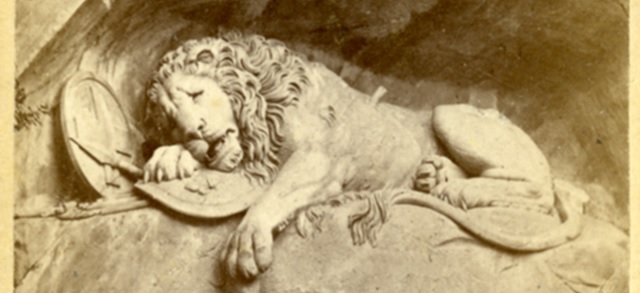
Monuments Class Projects
Architect/Sculptor of Monument
Franz Anton Von Zauner (1746-1822)
Preview

Identifier
05a
Medium
photograph, carte-de-viste
Keywords
Josefplatz, Neoclassical, Hasburg Dynasty, Vienna, Austria, History, Carte de Viste, Joseph II, Emperor
Physical Dimensions
7 x 4 1/2"
Date of Publication
2025
Date of Publication
c. 1860-1890
Name of Monument
Joseph II Statue. Vienna, Austria
Date of Creation of Monument
1807
Date of Completion or Dedication of Monument
1807
City of Monument
Vienna
Location within City
Josefplatz
State/Province of Monument
Vienna
Country of Monument
Austria
Description
This neoclassical statue honors Austrian Emperor Joseph II who was known for his progressive reforms, including the abolition of serfdom, which granted peasants legal freedom. It was commissioned by Joseph's nephew, Emperor Francis II. The monument in Vienna's Josefplaz celebrates Joseph II's legacy as the "People's Emperor" and symbolizes his commitment to public welfare and Enlightenment ideals. Designed by Franz Anton von Zauner, the statue stands in front of the National Library in Vienna, Austria.
School of Art/Architecture
Neoclassical Sculpture
Publisher
Oscar Kramer
Digital Date
4-22-2025
Copyright
Physical copy of the carte-de-viste is in the public domain, Digital copy scanned by Rod Library ©2025 Rod Library, University of Northern Iowa
File Format
image/jpeg
File Size
59 KB



Comments
The statue of Joseph II (1741-1790) stands as a symbol of his ambitious but often controversial rule over the Austrian and Holy Roman Empire. Taking the Austrian throne in 1780 at just 24, Joseph II sought to implement sweeping reforms, including religious tolerance and efforts to weaken the nobility. However, many of his policies faced resistance and ultimately backfired.
Joseph II's legacy was honored after his death in 1790. His brother, Leopold II, and his nephew, Francis II, reversed many of his actions, but later Francis II decided to commemorate Joseph II's legacy, since he had become respected and loved by the people. He commissioned sculptor Franz Anton von Zauner to create a monument in his honor.
Franz Anton von Zauner (1746 - 1822) was known for his neoclassical sculptures. The statue’s base includes medallions that highlight Joseph II’s significant actions, particularly the lifting of Leibeigenschaft (serfdom), which granted peasants legal freedom. The promotion of trade is another aspect of his legacy highlighted by the monument.
The inscription on the monument reads in Latin: “Josepho II. Aug., que saluti publicae vixit non diu sed totus”. To which translates as “To Emperor Joseph II, who lived not long, but completely, for the public’s well being.” This portrays Joseph II's image as the “Volkskaiser," or The People’s Emperor. Franz Anton von Zauner's work on the monument took over ten years to complete, and it became one of the highlights of his career.
The idea for Joseph II’s monument in Vienna’s Josefsplatz came from Johann Ferdinand von Hohenberg (1733-1816), a well-respected Austrian architect. He had been working on the Palais Pallavicini, which was built for a wealthy banker who wanted the palace to flaunt his wealth and status. Hohenberg envisioned a statue of Joseph II “in the middle of the square, but also in the foreground, a beautiful pedestal raised on tuff stone, adorned with ornaments, and upon it, a statue accompanied with trophies.” (Berg 1915, Chapter IX).
Josefsplatz is where the statue of Josef II stands. The nearby Hofburg, built at the beginning of the 13th century, is the former imperial palace of the Habsburg Dynasty and is now the official residence of the Austrian President. It is one of the most important historical buildings in Vienna, featuring a mix of medieval and neoclassical architecture. The Austrian National Library is directly behind Joseph II’s statue, while on another side, stands the Augustinian Church where Habsburg weddings took place, and their hearts were buried.
Bibliography
Beales, Derek. 2008. Joseph II: Volume 1, In the Shadow of Maria Theresa, 1741-1780. Cambridge University Press. https://www.google.com/books/edition/_/Iq049fDt300C?hl=en&gbpv=0.
Berg, Hermann. 1915. Der Bildhauer Franz Anton Zauner Und Seine Zeit, Ein Beitrag Zur Geschichte Des Klassizismus in ÖSterreich. Published by the Imperial and Royal Ministry of Culture and Education. https://babel.hathitrust.org/cgi/pt?id=njp.32101075445914&seq=122.
Laurence Cole and Daniel Unowski. 2007. The Limits of Loyalty Imperial Symbolism, Popular Allegiances, and State Patriotism in the Late Habsburg Monarchy. 1st ed. Berghahn Books. https://www.google.com/books/edition/The_Limits_of_Loyalty/NtED6Ls11L0C?hl=en&gbpv=0.
Kaszay, Alexandra . "Hofburg Vienna." HOFBURG and Vienna. Accessed March 9, 2025. https://www.hofburg.com/en/information/newsletter.